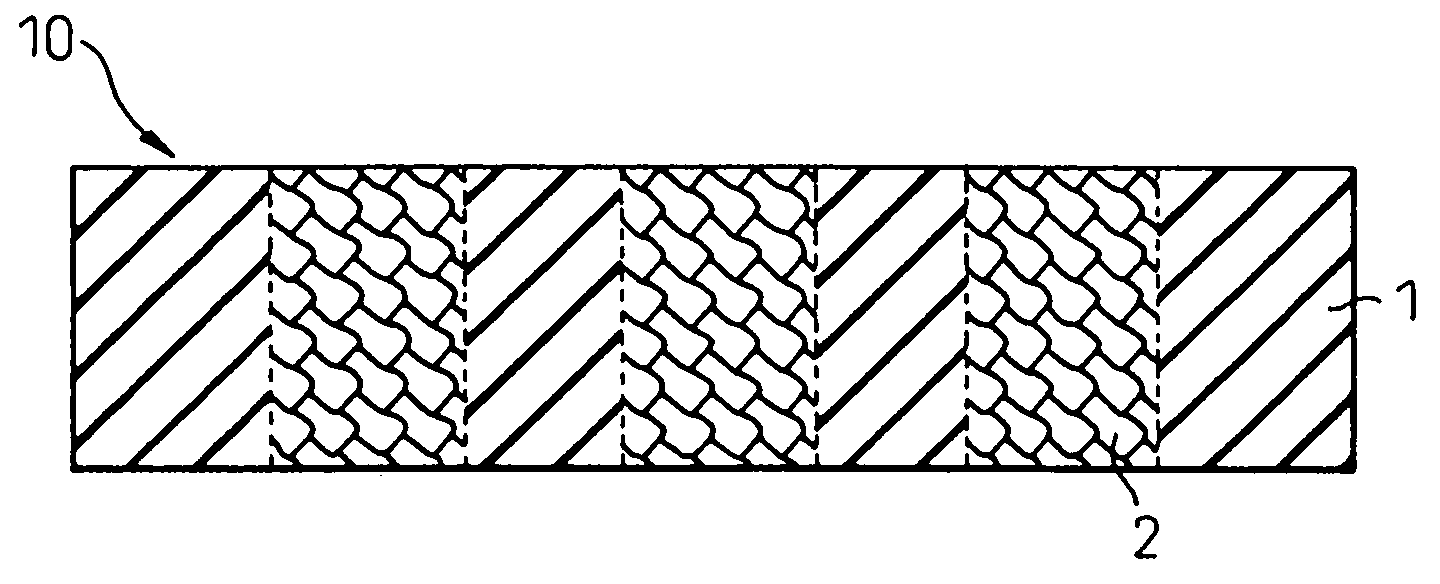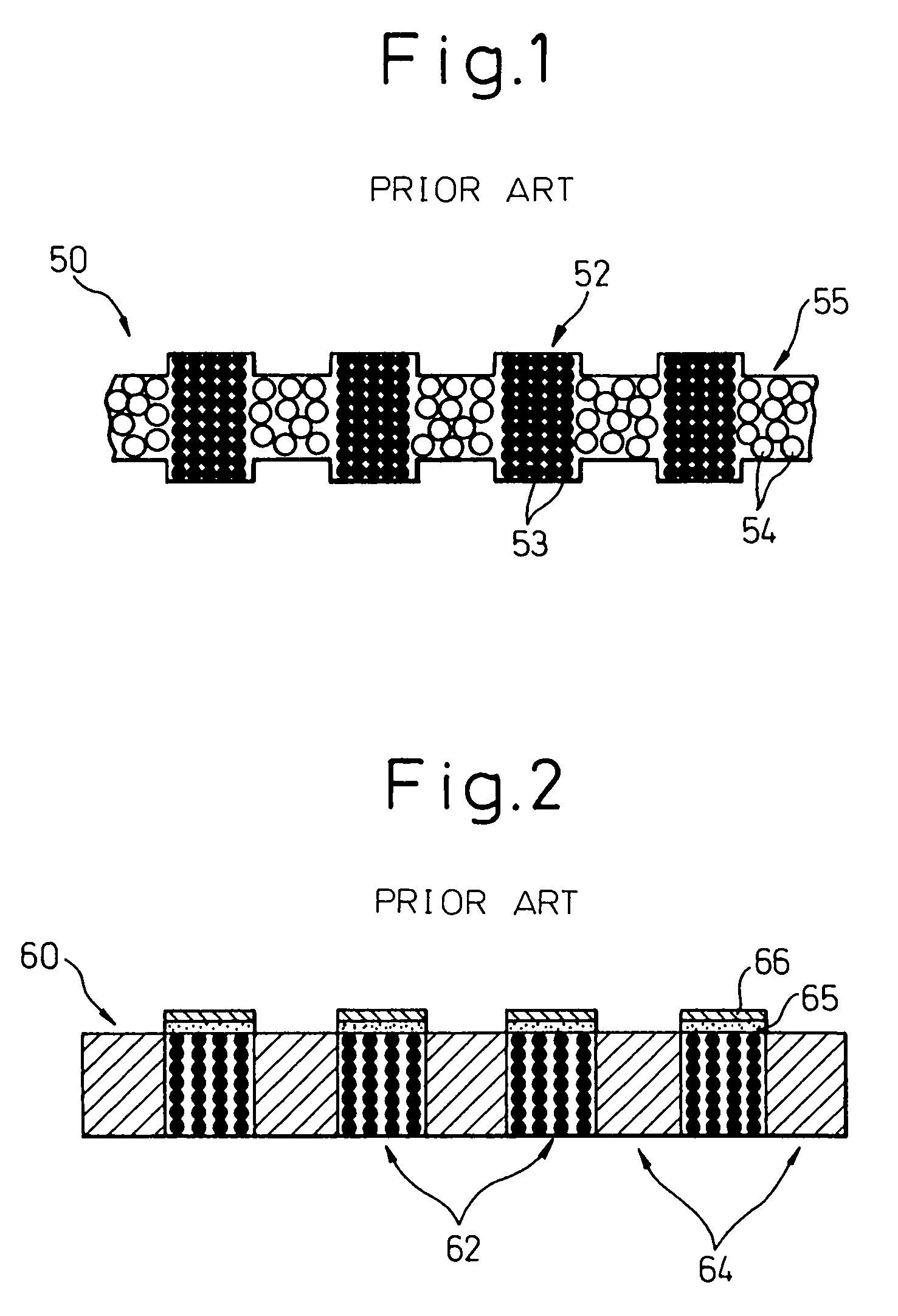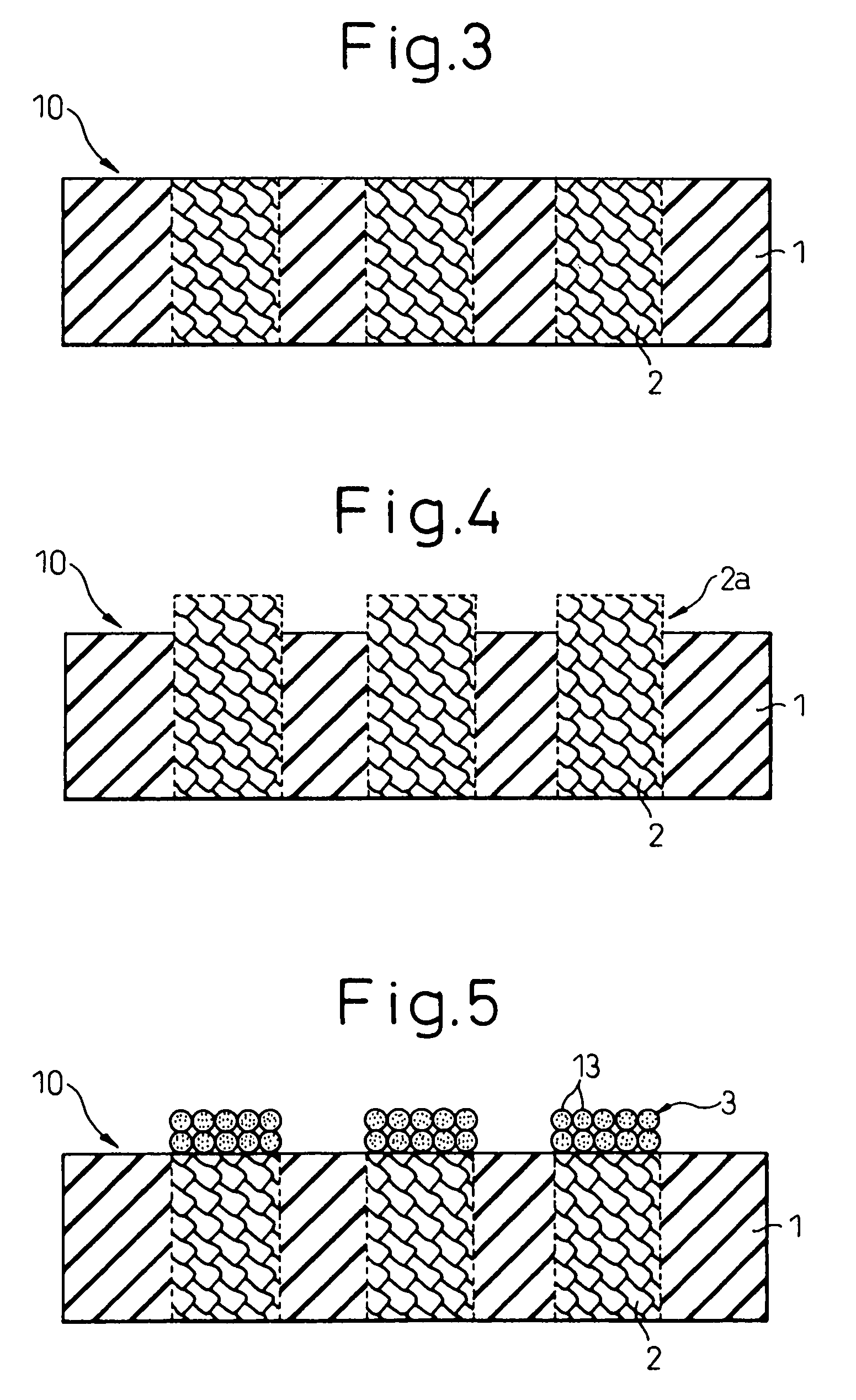Anisotropic conductive sheet, production process, contact structure, electronic device and inspection apparatus for operation test
a technology of anisotropic conductive sheet and contact structure, which is applied in the direction of connection contact material, coupling device connection, instruments, etc., can solve the problems of difficult realization of contactor capable of simultaneously coming into contact, the inability of general purpose use of handling devices, and the inability to realize contactors, etc., to achieve simple production process, low production cost, and long life span
- Summary
- Abstract
- Description
- Claims
- Application Information
AI Technical Summary
Benefits of technology
Problems solved by technology
Method used
Image
Examples
example 1
[0119]In this example, an anisotropic conductive sheet was produced by the method explained above referring to FIGS. 15A to 15E.
[0120]As an insulating base material, there was prepared a polyether etherketone film, the thickness of which is 300 μm. At predetermined positions in this base material, through-holes, the diameters of which are 0.2 mm, were formed with a precision drill. Next, a conductive adhesive, which exhibits rubber elasticity after it has been hardened, was charged into the respective through-holes with a spatula in the manner similar to screen printing. (The conductive adhesive used herein was a material the matrix of which is urethane, the hardness of which is substantially identical with 6B of pencil hardness, and which is available as the item number “3302F” from Three Bond Corporation). Immediately after charging, metal covered powders as a contact-forming conductive material were coated on the conductive adhesive layer and heated at 120° C. in an oven for one ...
example 2
[0122]In this example, an anisotropic conductive sheet was produced by the method explained above referring to FIGS. 16A to 16E.
[0123]An insulating base material was made in such a manner that PET films of 100 μm thickness were bonded onto both faces of a polyether etherketone film of 300 μm thickness with a simple peeling adhesive. Through-holes of 0.2 mm diameter were formed at predetermined positions of this base material with a precision drill. Next, a conductive adhesive, which exhibits rubber elasticity after it has been hardened, was charged into the respective through-holes with a spatula in the manner similar to screen printing. (The conductive adhesive used herein was a material the matrix of which is urethane, the hardness of which is substantially identical with 6B of pencil hardness, and which is available as the item number “3303E” from Three Bond Corporation.) Immediately after charging, metal covered powders as contact-forming conductive material were coated on the c...
PUM
| Property | Measurement | Unit |
|---|---|---|
| temperatures | aaaaa | aaaaa |
| thickness | aaaaa | aaaaa |
| thickness | aaaaa | aaaaa |
Abstract
Description
Claims
Application Information
 Login to View More
Login to View More - R&D
- Intellectual Property
- Life Sciences
- Materials
- Tech Scout
- Unparalleled Data Quality
- Higher Quality Content
- 60% Fewer Hallucinations
Browse by: Latest US Patents, China's latest patents, Technical Efficacy Thesaurus, Application Domain, Technology Topic, Popular Technical Reports.
© 2025 PatSnap. All rights reserved.Legal|Privacy policy|Modern Slavery Act Transparency Statement|Sitemap|About US| Contact US: help@patsnap.com



